The Dark Sorcerer – a next gen comedy from Quantic Dream
The Dark Sorcerer – a next gen comedy from Quantic Dream
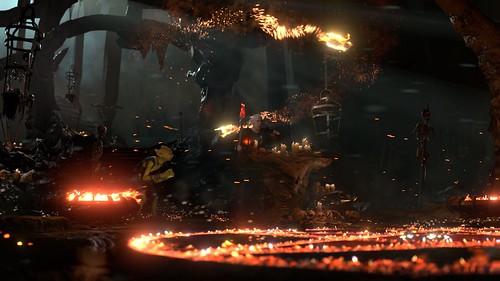
We love prototypes.
In 2005 Quantic Dream started working on a short film in real time 3D called The Casting, using the PS3 graphic engine we had just developed. Our initial objective was to make a technical prototype to test the limits and performance of this new engine, but Sony, with whom we had not yet started working, quickly encouraged us to present it publicly at its booth at E3 in order to illustrate the graphic potential of the PS3 that was launched that same year.
Everything we learned from making the short, particularly the immense difficulty of creating emotion in real time, but also the importance of the actor’s performance, facial Motion Capture, the challenge of lip synchronisation and especially eye animation, would enable us to develop Heavy Rain.
After this somewhat fortuitous first effort (but which succeeded in attracting the attention of the press and players and largely contributed to creating interest in the small French company that is Quantic Dream), the idea of making it a recurring principle quickly developed.
After all, our prestigious and infinitely more talented big brother, Pixar, had taken the same path before we did by testing ideas and technologies in short films that later went public, which is, after all, much more fun than making austere technological prototypes.
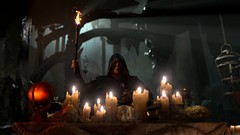
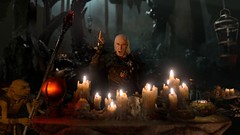
We therefore decided, with the support of Sony, to work between each two games on a technical prototype that is destined to be shared with the public. Each time a small crew of ten people maximum would work on a demo lasting a few minutes for a period of four to six months in order to test ideas, technologies and concepts, while using the real time technology of our next game.
Real time emotion
Our second technical prototype was presented for the first time at the GDC in 2012. This prototype, called Kara after the main character, used our second-gen 3D engine (which would be used to develop our new game, BEYOND) and was supposed to enable us to experiment with Performance Capture for the first time. This movement capture technology can simultaneously capture the actor’s body and facial movements, as well as their voice.
To test our ability to reproduce different emotions in real time, I quickly wrote the story of this young android woman designed to be a multi-functional object and which becomes human before the eyes of the spectator.
This was an immense discovery for me and the team, a demonstration of something we had believed for a long time: it was finally possible to create strong and subtle emotions, to create empathy, to read a look, with game characters. Each time this short is projected, I observe the public as they watch it, hold their breath and share the emotions of the character on the screen. At long last, a new world had opened up before us, the end of the pantomime, the end of exaggeration and over-acting in order to make up for gross technology.
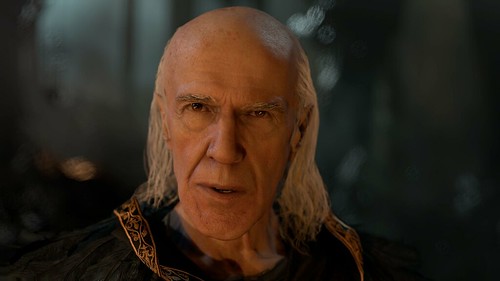
We would finally be able to start using this medium to say something.
The other lesson that Kara taught us was the importance of the actor’s performance. The young actress, Valorie Curry, who lent her features and her immense talent to the main character put in an extraordinary performance that was rich in nuance and subtlety. She succeeded in giving a soul to a character made up of pixels.
Kara confirmed our desire to work with exceptional actors, which played a role in our determination to approach Ellen Page and Willem Dafoe for BEYOND. This also made us more confident in our ability to faithfully transcribe the emotions that these actors would create through their performance in the studio.
The other great discovery was that although we had the feeling that we were setting the bar very high each time in terms of the graphics for these short films, by working several months on a few minutes, the quality improved automatically in the game that followed. Heavy Rain is much more accomplished than The Casting, BEYOND is much more accomplished than Kara, although it presents nearly 300 characters in more than 10 hours of play.
The lessons drawn from the prototype, the experience acquired and the rationalisation of the process enabled us to improve the graphic quality while simultaneously reducing the production time.
The Dark Sorcerer: An attempt at a next-gen comedy
When we started working on PS4 the question of the next short film arose. What could we do this time? What new field should we explore? Of course we were going to have a new Next-Gen graphic engine that would significantly improve the graphic quality. Of course we were going to try to push back the limits of performance capture, a technique that we are beginning to master after one year of intensive shooting for BEYOND.
For me, the most important question was what kind of new emotion could we test? Kara (then BEYOND) had demonstrated, for me, that it was possible to create dramatic emotion. It didn’t seem to be particularly interesting to recount another Kara-style story based on the same emotions and the same mechanisms. We had to test another limit, something radically different. We had to try comedy.
Making people feel fear is actually fairly simple. Creep up behind someone without a sound and suddenly shout, and you’ll startle them. Moving people by telling a sad story is more difficult, but if you have a moving story and you tell it the right way, you can manage to move your listeners.
The problem with comedy is that you need a good story, pacing and talented actors in order to get even a smile from your audience.
The other challenge is cultural: although we can frighten or move a Japanese person, an American or a German with more or less the same things, laughter is eminently cultural. People in different countries don’t laugh at the same things. What is hilarious in one country may be considered to be sinister or vulgar in another.
My first task thus consisted in trying to find a subject that would amuse any kind of public of any nationality. The idea of a film shoot that backfires is a fairly well-known subject, and talking about a video game shoot particularly in an environment that is familiar to all players should guarantee us a universal subject. I also wanted to work with several actors in the studio (which we greatly enjoyed doing for BEYOND), because comedy is essentially a question of pacing between the actors.
I also wanted to test a character that, morphologically, would be not quite human in order to see how facial Motion Capture would adapt to a different morphology.
Lastly, and most important of all, I wanted to know if it was possible to make people smile with a real-time technology. I was certain my colleagues in the industry would vie to surpass each other with warriors, zombies, soldiers, aliens and next-gen orcs to great effect.
Better not to compete and try something radically different.
And that’s how I ended up in the studio with David Gant, a wonderful 70-year-old Scottish actor (in a kilt) as a Sorcerer, Carl Payne, who used to be in The Cosby Show in the role of Maurice (the first black Goblin in the history of Heroic Fantasy), and the hilarious Christian Eriksen (who has been in all my games since OMIKRON) as a demon, not forgetting David Gasman (another oldie, Paco in Heavy Rain and the policeman who questions Jodie in BEYOND) as the Voice Off Director.
PlayStation 4: Let the hardware shine
After a particularly trying shoot (it’s hard work making people laugh…), the implementation period began and it was time to start playing with version 1.0 of our new PS4 engine.
Then came the first surprise: the graphic quality obtained with relatively little effort was a spectacular improvement on PS3. We obviously expected this, going from the tech specs, but it’s one thing comparing the number of polygons per second, and it’s quite another seeing it on the screen.
What surprised us first off was the global quality of the images. We are so used to seeing games in 720p (the standard on PS3) that we had forgotten how much Full HD (1080p) changes life. If we add an anti-aliasing HD, HD textures, a real 3D depth of field and of course an avalanche of polygons and lights, we get an idea of the emotion that PS4 can produce in any normally constituted computer graphics artist.
On PS4 everything looks great because the machine offers power that was totally inaccessible up until now. We can feel that we are closing in little by little on the kind of graphic quality we find in CG films.
(NB: and now a very boring technical part, except if you’re a developer for the competition. Skip this paragraph if you’re like me and you find technical parts boring)
In the current demo, there are about a million polygons in the set, and a little less than a million per character on the screen (i.e. a total of 4 million when the three characters are on the screen). Each character has about 350 MB of textures and about forty different shaders. It’s all managed with Physically Based Shaders, volumetric lights, full HDR, Color Grading, Physical Lenses (particularly useful for chromatic aberrations and 3D depth of field), and translucence for more realistic rendering of the skin.
The change of set and all the lighting (and the behavior of the shaders) between the dramatic version of the set and the “studio” version is done in real time. The same holds true for all pyrotechnical particle effects.
(End of technical details, you can now continue to read normally)
Creating interactive images on PlayStation4 is fascinating, but to maintain the same level of quality throughout a game all the studios in the world would have to reinvent themselves from the bottom up. New skills will appear (Director of 3D Photography, for example), the size of server infrastructures will have to be seriously reviewed in order to be able to deal with the size of the new full HD data and, most of all, we are going to have to rethink this medium and the games we create, because the technology now allows us to achieve a level of quality that was previously available only in the cinema.
The PS4 engine used for The Dark Sorcerer is only in its first iteration and most of the features scheduled for the final version of the engine haven’t yet been implemented. This demo is only a first test that is well below the visual quality we hope to achieve in our next game. The next game… which will not be based on this demo, obviously (I know, we’re a bit weird…), but on an idea that is completely different from what we’ve done to date. It’s incredibly exciting, and I wish I could tell you more… but I can’t.
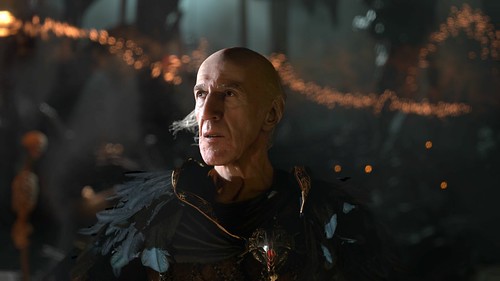
To be funny or not
As I write these lines I have absolutely no idea what the reactions to The Dark Sorcerer will be. What I can say is that it is certainly the script that gave me the hardest time. The idea came very quickly, but then I had to fight with doubts up until it was too late to change my mind. I was ready to rewrite something completely different, something serious and dramatic like Kara rather than run the stupid risk of writing something that wasn’t funny.
And in the end of the day, I stuck with it. Life is too short to waste time doing boring stuff. Better to take risks and do something you believe in. Both the team and I had enormous fun developing these eleven minutes and transcribing as well as we could the performances of these four totally wacky actors.
In a few months we experienced something between Monty Python and Terry Pratchett (obviously without claiming to match their talent), and we laughed at each projection of the Goblin’s antics and the growing annoyance of the Sorcerer. We learned how attempting to produce beautiful images with such computing power is painstaking, how each second has to be worked out in minute detail, how light and shade became essential, how difficult it is to raise a smile.
And there was also, somewhere in all this, a desire to distance ourselves from the clichés of video games with their stereotyped themes where the bad guys are really evil, where sorcerers summon up demons, where heroes have big muscles and girls have big boobs. A little distance from our tendency to take ourselves seriously and believe that we are saying something original or important, whereas the stories and universes of many video games are no more than the echoes of things that have been done better a thousand times before us. Howard created Conan the Barbarian in 1932, and Tolkein wrote Lord of the Rings in 1954, and nothing our industry has created so far can even hold a candle to the genius of Frazetta or the visionary talent of someone like Peter Jackson.
The Dark Sorcerer is also about what video games are like today, an extraordinary and fantastic world where anything is possible, but also a world where everything remains to be invented.
Famous last words
To conclude, the whole team and I hope you like The Dark Sorcerer. We put our hearts and souls into it and we are happy to share the result with all those who keep track of and appreciate our progress. I hope you enjoy those eleven minutes as much as we enjoyed creating them.
If you smiled even once while watching this short film, our work has been worthwhile.
One last word: if you liked The Dark Sorcerer, don’t forget to have a look at our next game, BEYOND. Although it’s a totally different genre, the game was made by the same team, with the same passion and unreasonable enthusiasm for trying to do something different. I hope that like me, you will be bowled over by the performance of Ellen Page and Willem Dafoe.
And lastly, a big thank you to all those who have stayed with us, write to us, come to meet us at conferences and fairs, to all those who buy our games. It’s your support that enables us to continue to create and experiment.
Autor: David Cage
Source:PlayStation.blog
Language: English
Previous News
- The Dark Sorcerer
- QD stories and projects not interesting anymore
- PlayFrance: interview David Cage
- [FJV 2009] Heavy Rain : Interview exclusive P3L de...
- Podcast: Kombo Breaker - Episode 45: Heavy Rain In...
- CVG: Heavy Rain delayed because it "needs space"
- IGN: new video and interview
- EDGE Online: An Audience With: David Cage
- PlayStation.Blog: Heavy Rain’s David Cage And I, T...
- Gamescom: Heavy Rain developer walkthrough


 Tuesday, June 11, 2013
Tuesday, June 11, 2013